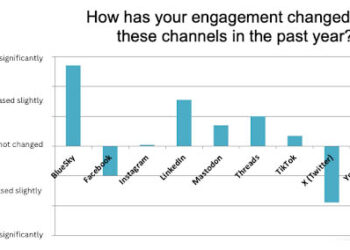
- Image via Wikipedia
While the iPad has been hailed as a potential bridge into the digital age, periodical publishers remain frustrated by its application-centric model — every issue has to be an application since there’s no way for a magazine application to include subscription elements in a satisfactory manner. This drives up prices for development, which are passed along to the consumer. The approach limits customizability and innovation, because there’s not enough upside to support a full build. And it limits participation to a few publishers willing and able to experiment.
However, Apple may be catching a clue, according to a recent Wall Street Journal report.
The Wall Street Journal story centers around the iPad version of the New Yorker, which launched last week. Priced at $4.99, the app is loaded with cool (i.e., normal) iPad features — animated cover, slideshows, audio tour, etc. But as Russell Adams writes in the WSJ report:
Getting beyond single-copy sales is critical for weekly publications like the New Yorker as publishers fear readers will be unwilling to download a new issue every week — and pay up each time.
It’s not that publishers aren’t trying to break the app-lock. This past summer, Time Inc. tried to launch an app for Sports Illustrated that supported subscription offerings, but Apple made them withdraw it. Other offerings being called “subscriptions” have apparently been piloted, but they aren’t robustly integrated into the storefront, and they don’t close the customer information cycle with the publisher.
There have been other compromises. Wired and the Wall Street Journal are allowing print subscribers to access their iPad versions at no additional cost this year. And that’s the hitch. These are sampling strategies, not subscriptions. These early entrants are trying to build buzz and audience, all while banking on better business model options from Apple.
Apple’s problem stems from its reluctance to share names and other personal information about app purchasers. This isn’t isolated to Apple — Amazon’s Kindle subscriptions are isolated from publisher business models in exactly the same way.
Lack of customer information hurts publishers in their efforts to integrate subscription offers, but also hurts advertising possibilities, which have greater potential with the iPad. Without clear information about iPad app customer demographics and geographics, publishers are currently porting ads over from print or selling on raw numbers, with novelty and new formats generating interest in place of targeting and measurement.
Rumors that a full implementation of iPad subscriptions is imminent have been circulating, and with a new iPad due to debut in early 2011, speculation is that subscriptions may be introduced as part of that product upgrade.
For these devices to mature into true publishing platforms, not just display platforms, integration with publishing business models will be critical to creating successful pricing options for consumers, enduring commitment from publishers, and clear paths for improvement for both.
Discussion
2 Thoughts on "Waiting for a Solution: When Will Subscriptions Reach the iPad?"
Blatant but relevant plug: Apple were perfectly happily for us to collect demographic information – name, position, place of work etc. etc. – and then sell subscriptions to Nature journals (as long as they lasted at least a month and went through Apple’s ecommerce system) in the nature.com app.
Zinio and others do the same thing with magazines on the iPad.
The problem that Time Inc. and other have is that they want more: they don’t want to pay 30% per purchase to Apple and/or they’d like the names and addresses came across with with a one-tap purchases from users. Seems understandable that Apple are reluctant to agree…
This is where the android OS will score I think. there doesn’t seem to be the aversion to enabling these sorts of information shares. given that Apple make their profits of the hardware (so I’m told), I don’t really understand their business logic. Surely the increased ‘use’ as magazine users move to the electronic format will more than compensate for any other ‘loses’ to the Apple business model.



